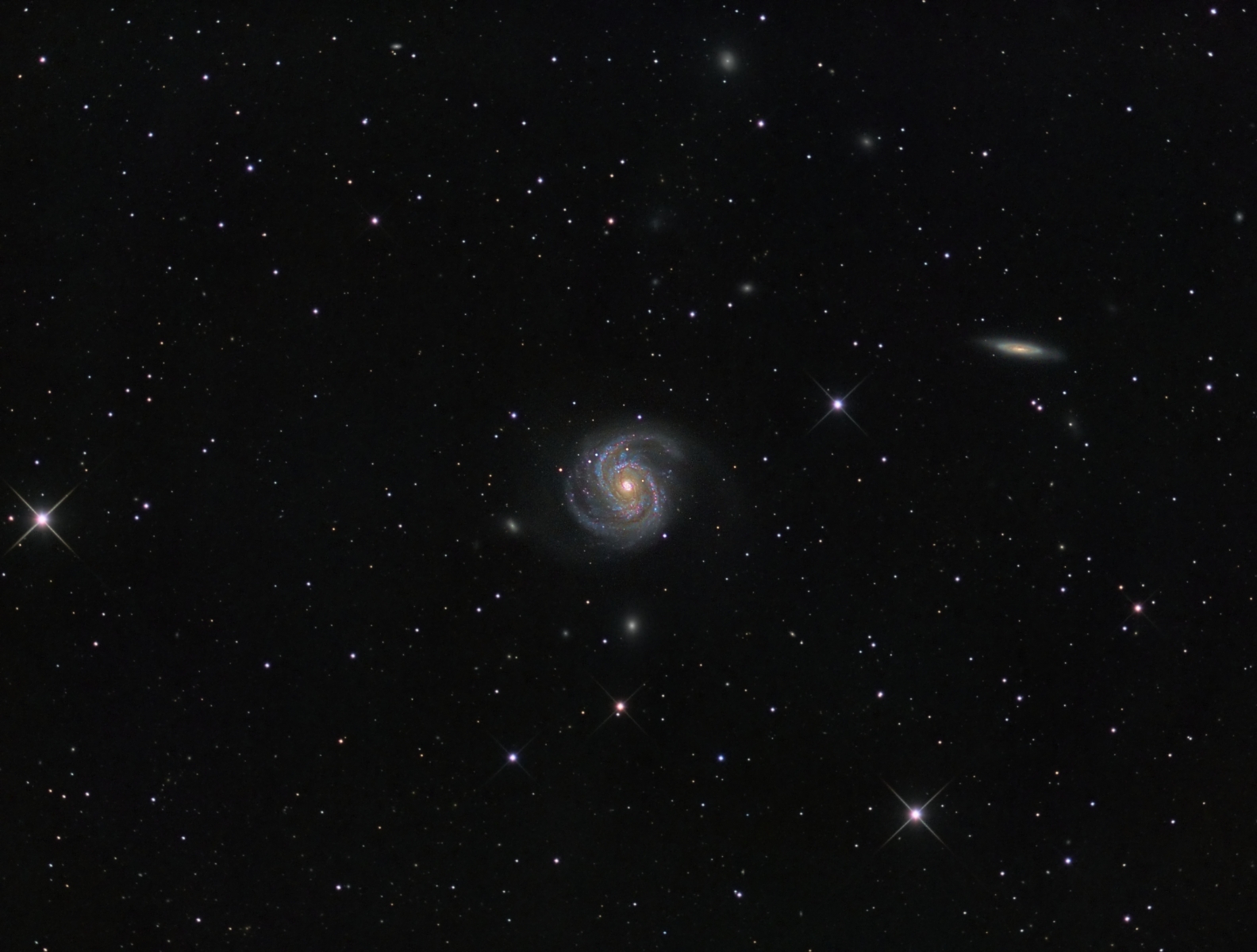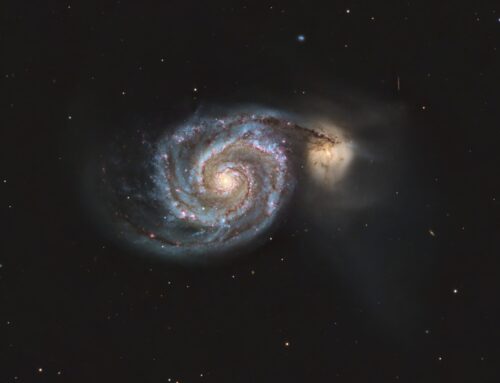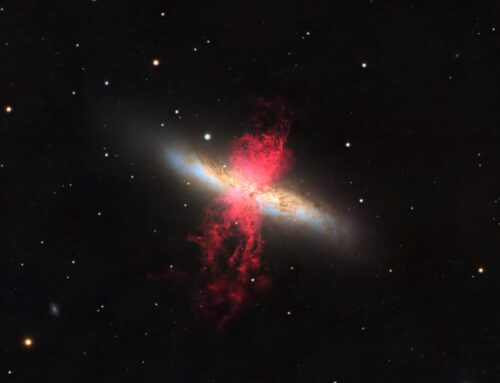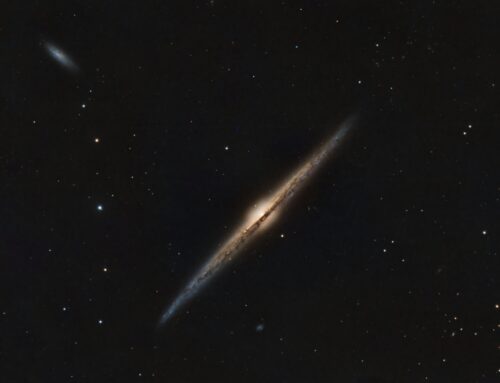M100, Spiral Galaxy
Click image for full size version
April 18, 2015
M100 is a spiral galaxy in Virgo, and is a member of the Virgo cluster of galaxies. It is one of the largest members of this galaxy cluster, and has a diameter of 107,000 light years. It is 55 million light years away. Note the pink emission nebulae and blue star clusters in the arms. I counted at least 17 other galaxies in this image – they look like smudges or streaks, as opposed to the sharp, round stars.
Tekkies:
SBIG STL-11000M camera, Baader Ha and LRGB filters, 10″ f/6.8 ASA astrograph, Paramount MX. Guided with STL-11000’s external guider and 80 mm f/6 Stellar-Vue refractor. Acquistion, guiding and calibration done using Maxim-DL. Focusing with FocusMax. Automation with CCDCommander. Registration, integration and all processing in PixInsight. Shot from my SkyShed in Guelph, Ontario. moderate moonlight for RGB, no moon for L; moderate moon for Ha.
11x10m R, 9x10m G, 9x10m B, 30x10m L and 16x20m Ha unbinned frames (total=15hr10m).
RGB:
Creation and cleanup: Ha, L, R, G and B masters were cropped. R, G and B were combined to make an RGB image which was processed with DBE and ColourCalibration. The Ha image was also processed with DBE and the NB-RGB Combine script was applied to blend the Ha into the RGB.
Stretching: HistogramTransformation was applied to make a pleasing yet bright image.
Synthetic Luminance:
Creation and cleanup: The cropped L, Ha, R,G and B masters were combined using the ImageIntegration tool (average, additive with scaling, noise evaluation, iterative K-sigma / biweight midvariance, no pixel rejection). DBE was applied to neutralize the background.
Deconvolution: A star mask was made to use as a local deringing support. A copy of the image was stretched to use as a range mask. Deconvolution was applied (100 iterations, regularized Richardson-Lucy, external PSF made using DynamicPSF tool with about 20 stars).
Stretching: HistogramTransformation was applied to make a pleasing yet bright image..
Combining SynthL with RGB:
The luminance channel of the RGB was extracted, processed and then added back into the RGB image as follows:
1. Extract luminance from the RGB image.
2. Apply LinearFit using the SynthL channel as a reference.
3. Use ChannelCombination in Lab mode to replace the RGB’s luminance with the fitted luminance from step 2.
4. LRGBCombine was then used to make a SynthLRGB image.
Final Processing
Dynamic Range Adjustment and Stretching: HDRMultiscaleTransform was applied at 6 pixel scales, protecting bright stars with a mask. TGVDenoise was applied in RGB/K mode with default settings, followed by HistogramStretch. A range mask was made that protected stars and background, and LocalHistogramEqualization was applied to the galaxy. SCNR was applied to the image to reduce a green cast.
Final Steps: Background colour saturation was reduced slightly. A blurred range mask was made and used to increase colour saturation and contrast in the galaxy slightly. An UnsharpMask was applied to the galaxy followed by a light noise reduction with ACDNR on the entire image. A copy of the SynthL was processed with MultiscaleLinearTransformation with 4 layers and residual unchecked. Convolution (2 px) was applied to the result and this was used as a mask to boost colour saturation in the centre of the medium and small stars.
Image scale is about 1.1 arcsec per pixel for this camera / telescope combination.







Leave A Comment